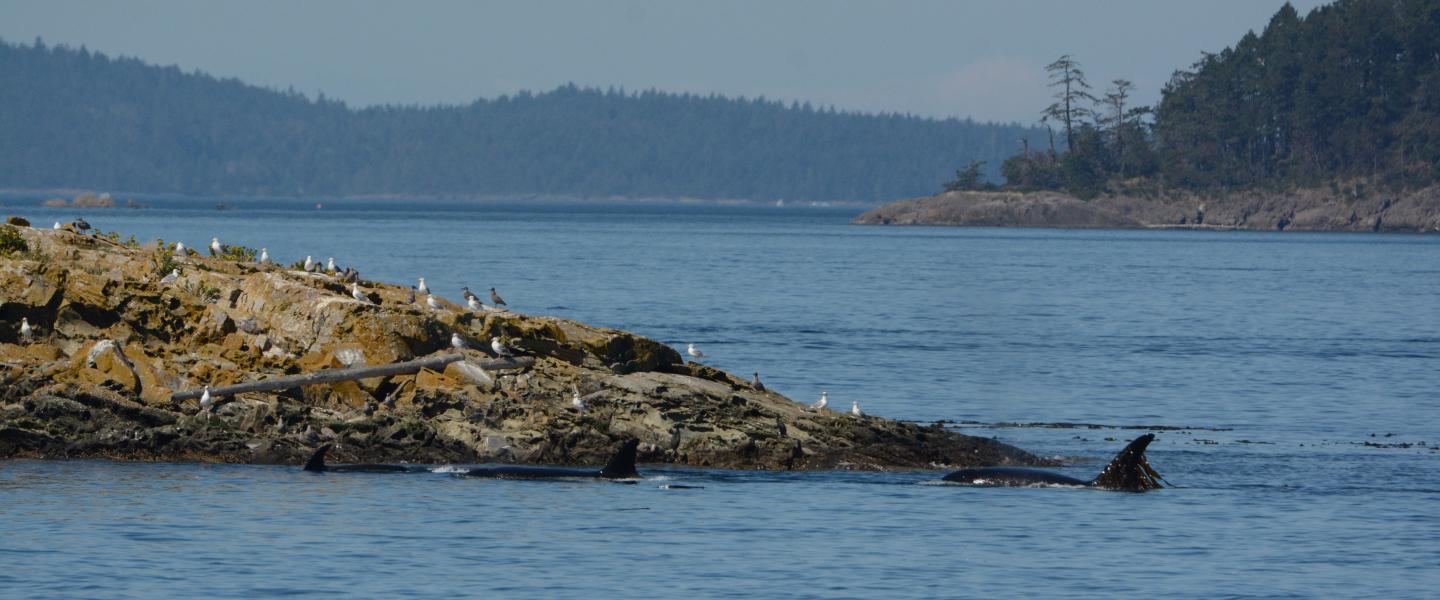
Maxx K. | M/v Osprey | August 28th, 2024 | 12:20pm
Bigg’s Killer whales have a typical range from SE Alaska, straight down the coasts of Washington and Oregon to Northern California. However, they don’t seem to follow a typical “migration” in the ways our Humpback visitors do. Different families seem to pass through at different times of year. Were still learning about how they move and with all the incredible data collection that happens in this region, we may begin to further understand familial trends. Are they motivated purely by food availability or have different families taken a liking to certain regions and frequent them more often?
For example, the T049A’s have been hanging out in this region for the last few weeks. Today we found them circumnavigating Mandarte island. Mandarte, located in BC waters just beyond the US/Canadian border, is the largest seabird colony in the region. It hosts a number of different species of pelagic bird including a robust population of Glaucous gulls and Cormorants. Furthermore, small haul outs of Harbor Seals can be found sunning themselves along its shoreline and foraging within the kelp forests in the waters off the massive rock.
The T049A’s (consisting today of a mother, “Nan” and her four youngest) hugged tight to the shoreline. The looped the island twice while we watched them, I assume scouting out for a harbor seal snack. Its often unclear to us exactly what whales are doing. We really only bear witness to the 5% of their existence when they break the surface of the water. So, unless the water turns red, we can physically see whales with prey in their mouths, or birds begin to circle overhead and dive for scraps, we really just have to make our best educated guesses about what we’re seeing, their behaviors and motivations.
My best guess is that they were foraging. Little T049A6 “Charlie II,” is two years old and assumedly weaned off his mom’s milk. Because of this, Nan is going to have to ensure he is capable of hunting- knowing what to snack on and where to look for it. And with the support of his older siblings as well, each foraging event is a great learning opportunity.
We left the family after approximately 45 minutes before turning back towards Friday Harbor, of course making a pass by Spieden Island to check out herds of non-native ungulates on our way home.